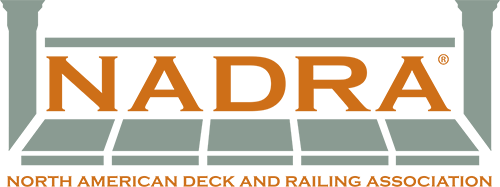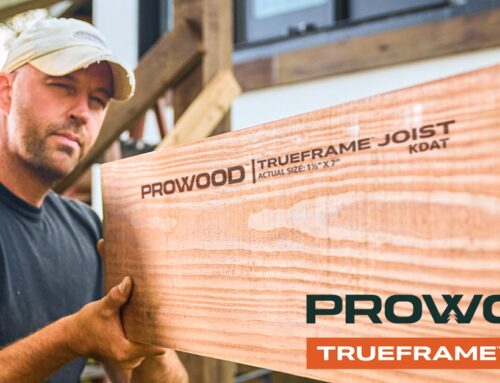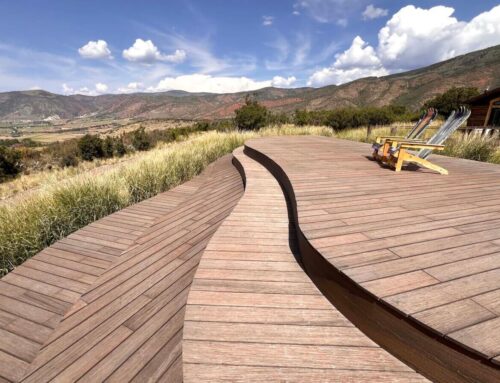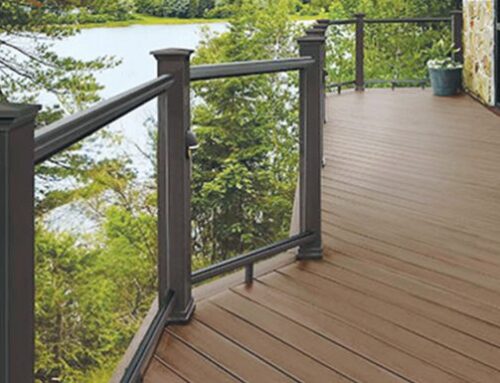It’s not even printed yet! Find out first with NADRA.
Here is the 2021 residential deck and railing codes summary by Glenn Mathewson
The 2021 edition of the International Residential Code is officially complete and ready for printing. Through member contributions, NADRA was able to participate in the code development process last year and work with others to further develop minimum standards and basic prescriptive design methods for common, residential deck construction.
On the NADRA blog, we provided updates throughout the process, with specific details and discussions about the technical merits of each of our proposals. (You can click HERE to view all of the code updates from 2019 and 2020). We also shared our concerns of proposals by others. That work has closed now for this new edition, so here’s the final, approved story of what’s coming in the next IRC…summarized, just for you..
Though many building authorities are only now adopting the 2018 as the local standard, the new 2021 prescriptive design provisions are a well-proven alternative that can be approved by building authorities and utilized as soon as published.
Table Updates:
The pre-engineered design tables have been completely overhauled in a number of ways:
- All the structural components can now be prescriptively sized for more than just a 40 psf live load, with the addition of 50, 60, and 70 psf snow loads in the design tables.
- Previously, the smallest tributary area of deck to size a footing from was 20 square feet, leaving something as small as a stair landing at a minimum 14-inch diameter for each corner post. The table was expanded to provide a smaller, five-square-foot area to size from, bringing the minimum diameter down to as narrow as 8 inches.
- The post sizing table was greatly expanded. Where previously inflexible and without recognition of any load or post species, a 4×4 post was limited to an ultimate 8-foot height. Now allowing for variables such as snow load, species, and tributary area of deck supported, the table can much more accurately size support posts. The common 4×4 post can now, under certain circumstances, extend as high as 14 feet.
- The beam design table was modified to include single ply beams in all of the species in the table, including redwood and cedar. Single ply beams are useful for lighter loads and shorter spans, but also eliminate the decay potential from water trapped between two or more beam plies.
- The joist span table was reorganized completely to better present the variables of joist span and joist cantilever.
- The one-fourth-the-backspan rule for joist cantilevers has been replaced with a maximum allowable cantilever for each common joist span length. This change provides for much better flexibility in design and more accuracy in the minimum sizes and spans.
Guards:
For decades, guards and handrails have been combined together in the specifications for minimum load resistance, though each one supports people in different ways. The minimum live load table now separates these features, primarily so the loading direction of guards could be independently evaluated. While handrails, the graspable rail beside stairs, are meant to support us and must resist forces in all directions; guards that wrap around our deck are only meant to keep us from falling outward, off the edge. Currently, they both must resist loads “in all directions”, and with the focus on testing guards to a 500 lb load resulting in some robust connections, it was fair to expect that such connections wouldn’t be necessary for an inward load. Guards should not be expected to resist this large force pulling inward or upward, and under the 2021 they will no longer. However, guard construction should also see some bad practices eliminated under a few other new provisions.
The new IRC will be the first I-code to provide any guidance on guard construction other than the load target and the geometry. Though guards function foremost as a safety feature, they are regarded daily as an architectural feature. The market for deck guard design is enormous and the American consumer is trained to demand the variety. This makes prescriptive guard design a very difficult and controversial subject to address. However, notched 4×4 guard posts have been notoriously attached to rim joists or beams with anything from lag screws to nails and with little validity in their performance beyond a small shove soon after construction. Time and tragedy has taught us that these guards don’t work, so the first step was prohibiting the notching of 4×4 guard posts at the connection point. The connection is also required to extend back into the framing in some manner to eliminate the issue of guards that pull a rim joist off the ends of the joists or a guard that rotates a single side joist. A handful of new sections read a little more like guidance than definitive code requirements, but this was purposeful. Any new restrictions or limitations on guard design must be done carefully and with broad consideration. A proposal for a new appendix chapter (an optional part of the code that can be adopted as mandatory or used simply for guidance) with specific details for wood guard post connection was not approved;even this subtlety in an appendix is too concerning to put in a regulatory document.
The other NADRA-supported proposals that were approved at the first hearing last year can be read about in detail at the NADRA blog, as well as various proposals from others that were not approved. While this process is now closed, it has already begun again. The 2021 IBC, ISPSC, and IWUIC that were finalized last year and are already ready to be modified again. These codes address decks at commercial buildings, swimming pools, and wildland fire locations and proposals for their continued development are due on January 11, 2021. Got an opinion about those codes as they relate to decks? We’d like to hear it.
To help NADRA continue our work in the code arena, please consider contributing to our code fundraising initiative. Click here to learn more and to support our efforts.





